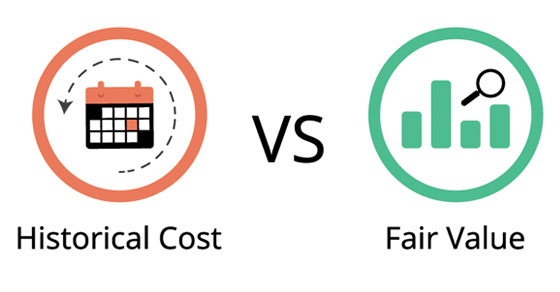February 1, 2018
The new year has brought us a new tax law to consider in part for 2017, but mostly for 2018. As with any law put together as hastily as the “Tax Cuts and Jobs Act” was at the end of 2017, there are many parts of the new law that are unclear and vague about how to apply it. We anticipate additional guidance from the IRS during 2018, including the issuance of regulations to help implement the new law.
In the meantime, we wanted to communicate some of the broader aspects of the new law and how we believe they will be applied.
INDIVIDUALS
- For 2018, seven tax brackets remain. The highest tax rate has been reduced from 39.6% to 37%, with similar reductions for the lower brackets. The 2018 brackets are 10%, 12%, 22%, 32%, 35% and 37%.
- The standard deduction for 2018 is increased to $24,000 for joint filers, $18,000 for head of household filers and $12,000 for all other taxpayers. On the flip side, personal exemptions for dependents have been eliminated.
- 20% Business Income Deduction- This new deduction has been and will be the most talked about provision in the new law. If you have business income (not including that of being an employee) then depending on your specific circumstances (type of business, individual taxable income and business operations), you may be able to get a tax deduction on your 2018 return for 20% of the business income. There are many variables involved in calculating the amount of the deduction, but if the following apply to your situation, the deduction might be available.
– Must have business income from a sole-proprietorship or a pass-through entity
– Depending on taxable income and type of business, business might have to pay W2 wages to be eligible for the deduction.
– Certain service businesses have limitations that serve to reduce or perhaps eliminate the deduction. These include typical service businesses but does not include architectural or engineering service firms.
– Many questions remain about how this deduction will be ultimately calculated and applied at this time
Availability of Child Tax Credits is increased for 2018, in terms of amount in dollar value of credit as well as income phase-out thresholds. The 2017 credit amount of $1000 has doubled to $2,000 in 2018. The phase-out income thresholds to be eligible for the credits have increased significantly to $200,000 (Single, HOH, MFS) and $400,000 (Joint).
- Expanded use of Sec. 529 plans for 2018 educational distributions. The definition of “qualified higher education expenses now includes tuition at an elementary or secondary public, private or religious school up to $10,000 per beneficiary, per tax year.
- State and local income/real estate/personal property tax deduction limited to $10,000 ($5,000 MFS) in total for 2018. Note that this limitation only applies to individuals and does not affect the deductibility of property taxes for those associated with rentals or businesses.
- Under the old law, the maximum home mortgage for the interest to be deductible was $1,000,000. The new law reduces the deductible acquisition mortgage debt to $750,000 ($375,000 MFS) for home purchases with binding contracts after 12/15/17. In addition, the interest deduction for home equity loan interest is suspended for 2018. However, the interest on home equity debt used in a trade or business or rental should still be deductible as part of that business.
- Under the old law, the itemized deductions of higher income taxpayers were phased out, resulting in a reduction of benefit for those deductions. For 2018, this limitation is gone, but keep in mind, the ability to deduct state and local taxes was also severely limited as part of the new law.
- For any divorce or separation agreement executed after 12/31/18, any alimony payments will no longer be deductible by the payer and won’t be included in the income of the recipient. This will impact the property settlement negotiations of a divorce.
- Repeal of the Affordable Care Act Individual Mandate is effective for months beginning after 12/31/18. This means that after 12/31/18, individual taxpayers will not be subject to the shared responsibility payment for not having appropriate medical insurance coverage. Note however, that the two other taxes enacted by the Affordable Care Act, the 3.8% Net Investment Tax and the .9% additional Medicare tax, remain in effect.
- Individual Alternative Minimum Tax (AMT)- For tax years after 2017, the AMT exemption has been increased and the income phase out limits (the income levels over which the AMT exemption is reduced/eliminated) has been increased to $1,000,000 (Joint) $500,000 (others). This should reduce the number of people subject to AMT, but we will see how this plays out.
- For tax years beginning after 12/31/17, the ability to recharacterize (essentially “undo”) a ROTH conversion is eliminated. Under prior law, IRAs that had been converted to ROTH IRAs were able to be “reversed” by recharacterizing the account. The new law does not affect the ability to recharacterize any ROTH contributions.
BUSINESSES/OTHER
- Corporate Income Tax rates for taxable years beginning after 12/31/17 will be at a fixed, flat 21%. Under previous law, the rates were graduated from 15%-35%.
- Domestic Producer Activities Deduction (DPAD)- This deduction was one of the casualties of the new tax law. This deduction is repealed effective for tax years beginning after 12/31/17.
- Bonus depreciation is increased to 100% of qualified property for property placed in service after 9/27/17. The new law also expands the definition of qualified property to include not only new assets, but used assets as well. Note: that will affect tax years ending after 9/27/17.
- Section 179 deduction is also increased for property placed in service after 12/31/17. Under the new law the Sec. 179 deduction is increased from $500,000 to $1,000,000. In addition, the amount of property placed in service before the Sec 179 deduction begins to phase out was increased from $2,000,000 to $2,500,000. Typically, the Sec 179 expense deduction is used in conjunction with Bonus Depreciation to reduce taxable income.
- Interest Expense Limitations- for tax years beginning after 12/31/17, the interest expense deduction may be limited. Generally, the interest deduction is limited to the sum of a) the amount of business interest income, plus b) 30% of the adjusted taxable income for the tax year, plus c) the taxpayer’s floor plan financing interest for the year. Floor plan interest means indebtedness used to finance the acquisition of motor vehicles held for sale or lease and secured by such inventory. The term “motor vehicle” is defined as any self-propelled vehicle designed for transporting persons or property on a public street, highway or road, a boat, or farm machinery or equipment.
- Net Operating Loss (NOL) limitations. Under prior law, an NOL was able to be carried back 2 years and carried forward 20 years. In addition, there was no limitation (up to the amount of current year income) in the use of the NOL. For NOLs arising in tax years beginning after 12/31/17 however, these cannot be carried back and must be carried forward. The losses carry forward to subsequent years indefinitely, however, the use of the NOLs is subject to an 80% of taxable income limit. This means that if a 2018 NOL is carried forward to 2019 and 2019 has taxable income of $10,000, the maximum NOL allowed for 2019 is limited to $8,000 (80% of $10,000). NOLs incurred in taxable years beginning prior to 12/31/17 are unaffected by this change.
- Meals and Entertainment- For amounts incurred after 12/31/17, the 50% of meals and entertainment deductions allowed under previous law will no longer be deductible. This means that client meal and entertainment expenses (i.e. tickets to sporting events etc.) will no longer be deductible even at 50%. It remains to be seen if IRS provides any additional guidance in this area, but be aware this could be an issue for amounts incurred post 12/31/17.
- Corporate Alternative Minimum Tax (AMT)- Effective for tax years beginning after 12/31/17, the corporate AMT is repealed. In addition, any minimum tax credit carried forward may offset regular tax liability for any tax year and a portion of the minimum tax credit may be refundable subject to limitations.
- Estate and Gift- For decedents dying after 12/31/17 the base estate and gift tax exemption amount is increased from $5,000,000 to $10,000,000. These amounts are indexed for inflation so that the exemption for deaths after 12/31/17 is expected to be $11,200,000 for 2018.
These are only some of the changes that come with the new tax law. As we review the law and any subsequent guidance and regulations provided by the IRS, we will be sure to keep you informed as we go through the rest of 2018.
If you have any questions concerning any of the above points or anything related to the new tax law, please contact your Maillie LLP representative for additional information.





